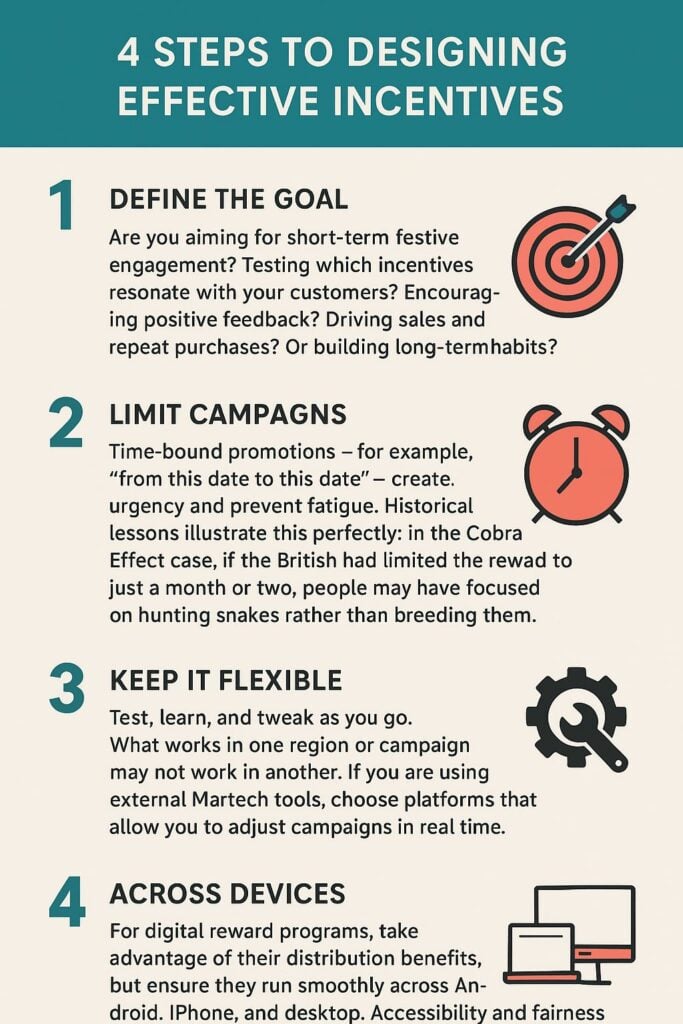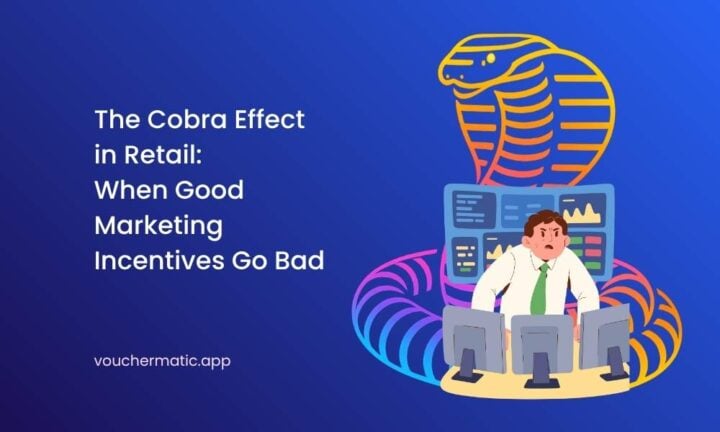Incentives are powerful tools. When used wisely, they can shape behaviour, drive sales, and inspire loyalty. But as investors and psychologists often remind us — the real challenge lies not in offering an incentive, but in designing the right one.
As Charlie Munger famously said,
“Show me the incentive, and I’ll show you the outcome.”
History has a funny way of humbling even the smartest planners. It teaches us that when incentives are designed poorly, they don’t just fail—they backfire. Sometimes spectacularly.
The Cobra Effect

In early 20th-century Delhi, British authorities faced a disturbing problem — venomous cobras. To reduce deaths, they offered a bounty for every dead cobra. Initially, it seemed like a brilliant idea. Locals raced to hunt the snakes. But soon, the unintended happened. People began breeding cobras just to kill them for rewards. What was meant to reduce a problem ended up fueling it. The streets of Delhi became even more dangerous once the bounties ended.
This phenomenon is now famously known as the Cobra Effect — a situation where good intentions lead to bad outcomes through misguided incentives. A poorly thought-out incentive can drain enormous energy and resources while making the original problem worse.

A similar situation occurred in colonial Vietnam. Rats were spreading plague in Hanoi. The French government, wanting to avoid contact with infected animals, offered locals a small payment for every rat tail brought in. The idea was to reduce the rat population — but clever locals realized they could simply cut off the tails and release the rats, allowing them to breed again. The result? A booming rat-tail industry, more rats than before, and another failed bounty.

Even in the Soviet Union, a reward system designed to boost nail production led to absurd outcomes. Workers were paid by quantity, producing countless tiny, useless nails. When paid by weight, they made fewer but massive, impractical ones. The incentive encouraged people to game the system rather than solve the problem.
Lesson for Retail marketer:
These stories share a pattern — one that marketers today can’t afford to ignore.
Every failed incentive began with good intentions. Every failure ended with more of the problem it was meant to solve.
Because people act in their own self-interest. And when a reward system focuses on the wrong metric — like tails instead of rats, weight instead of usability, clicks instead of connection — it creates a perverse incentive.
The lesson?
Don’t reward the input. Reward the outcome.
The Marketing Cobra Trap
Marketers in the digital age fall into the same traps — just with better fonts and faster dashboards.
- Offer deep discounts to drive sales, and you train customers to only buy when you’re on sale.
- Dilute your Customer Lifetime Value (CLV) by offering generic loyalty points that lead to zero meaningful behavioral change.
- See Return on Marketing Investment (ROMI) plummet as campaigns are artificially inflated by fraudulent bot engagement.
The risk is clear.
We’ve simply replaced cobras and rats with coupon codes and metrics — and the effects are the same.
Designing Better Incentives
So, how do we fix it?
Start by designing rewards around outcomes, not actions.
Instead of paying for every transaction, reward measurable growth — repeat visits, referrals, authentic engagement.

Instead of flat discounts, use Choice Architecture to shift the customer’s focus from price to experience.
- Buy for $1000 and get 5% off or 1 lucky draw entry.
- Buy for $1100 and get 10% off or 2 entries.
This small change — giving the customer agency — shifts perception. They no longer feel manipulated by marketing. They feel part of it.
And when you layer gamification into this — a spin wheel, a digital scratch card, a mystery box— you turn transactions into experiences. The thrill of anticipation becomes its own reward.

Measure What Matters
Don’t just count how many entries or redemptions you got. Ask:
- Did engagement improve?
- Did customers return faster?
- Did you get more referrals?
Measure the change you want to see, not the numbers that are easiest to count.
For brands with lean marketing teams or limited tech budgets, this mindset saves enormous time and cost. It ensures every incentive moves you closer to the real goal — lasting loyalty.
Design Your Incentives Around Outcomes
Good intentions aren’t enough.
The road to meaningful results is paved with well-designed incentives. Solve the problem — don’t feed it.

Finally, and most importantly, design incentives that build culture. Think about Apple — it doesn’t lure people with discounts. It fosters a sense of belonging. Its culture is the reward.
The true measure of a successful marketing initiative isn’t a spike in redemptions; it’s the lasting, positive change in customer behavior.
The Cobra Effect reminds us that good intentions are irrelevant if the incentive structure is flawed. To build a resilient brand and maximize Customer Lifetime Value (CLV), executive teams must pivot to designing experiences—not just transactions. Prioritize flexibility, transparency, and choice architecture so your rewards cultivate a loyal, high-value customer culture, moving your business firmly out of the trap.
Start designing smarter, outcome-based incentives with Vouchermatic — where technology and psychology work together to create real impact.

